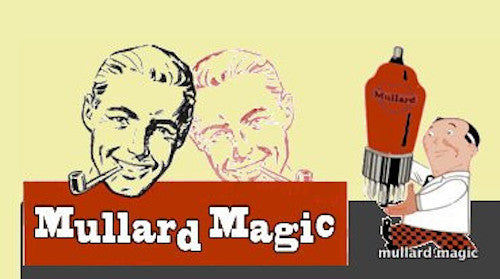Here we have a few more words on the MH-SVT from Mullard from 1951 along with a few of my own added in blue text:-
This valve testing apparatus is capable of carrying out tests as similar as possible to those standard production tests to which all Mullard valves are subject. The tests are not of course as exhaustive as those carried out during manufacture but they do ensure that the valve under test is satisfactory in all respects insofar as it is within the approved tolerances of operation.

Use of Punched Cards: arrangement of the test circuit and selection of test parameters is performed using a perforated card corrresponding to the valve under test.

This card is inserted into a gate switch contained within the valve tester. Three such cards are supplied with each instrument for use when setting up and adjusting the tests. Numbered and punched cards for the actual tests are available together with a printed list giving the valve types and the reference numbers of the corresponding cards.

Here's what the complex and slightly unreliable gate switch internals look like.

Three Test Limits: in place of a moving coil meter, a cathode ray tube (CRT) and vertical coloured scale are employed to indicate the results of various tests. If the valve is within specified limits, the spot on the screen of the CRT is defelected to the green part of the scale. If, on the other hand, the valve fails to meet the test requirement, the spot is deflected to the red part of the scale. a reading in the intermediate part of the scale indicates that the test valve will soon need replacement.
But the real pity was that the CRT based 'snog-marry-avoidometer' style of indication allowed no quantitative estimation of valve performance to be made - the MH-SVT was useless for valve matching.

Construction: the test apparatus is mounted in a metal case with a sloping front. All internal components are readily accessible for servicing by removing one or more sections of the case.
In the later 50s Mullard described the hammertone finish of the MH-SVT as being a 'densito finish' - can't think why though - perhaps it pre dated Hammerite! The gate switch contacts were an inspired idea, however, their complexity made them liable to corrosion, arcing and consequent unreliability.

At the top right hand side of the front panel is situated the switch which selects the tests in sequence and below it is a rotary switch by means of which fine adjustment of the operating voltage can be made in accordance with the prevailing voltage of the supply mains.

To the left of the CRT are four buttons by means of which individual electrodes may be tested for short circuits, insulation and open circuits.

The front panel carries a removeable plate behind which are situated the adjustments for zero setting, reject limit setting, brilliance and focus and for lateral shifts of the spot in case phosphor burn becomes a problem, a fresh part of the screen may be used.
It is said that some dubious dealerships encouraged customer valve testing, often at the cost of 6d to 1/- on a MH-SVT whose reject limit settings has been adjusted very high so that a good valve would appear marginal. A West Yorkshire ex TV Engineer pal told me that his boss bragged that he achieved a 50% on test replacement valve sale rate by using this deplorable tactic.
Mains Adjustment: the instrument has been designed to operate on 50 c/s AC from 180 to 260 volts. Adjustment of the various voltages is by means of 20V tappings on the mains transformer located on the control panel in conjunction with an eleven position rotary switch operating in 2V steps situated on the indicator panel and marked MAINS ADJUST.
Initial & Periodical Check Routine: to ensure correct function, special check cards must be used to check mains voltage against an internal standard. Meter sensitivity and HT stabiliser may also be checked.

